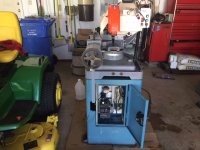Thebrick53
Plastic
- Joined
- Sep 26, 2022
I am looking into buying a series one Bridgeport. It is an excellent machine but it is three phase (i believe the main motor is a 2 horse. The machine has a secondary 3/4 horse motor for the x-axis feed witch is also three phase. Any recommendations on what three phase converter would be good for the job?
Also I would like to know where I can date the machine. I have the model numbers but don’t know were to look to get a manual and date the machine.
Also I would like to know where I can date the machine. I have the model numbers but don’t know were to look to get a manual and date the machine.



